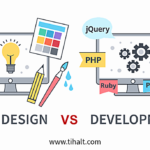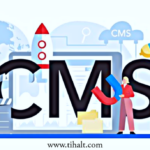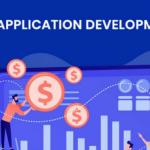Humans have their own means of communication, like signals, written messages, and verbal language to connect with one another. But have you ever wondered how an app accomplishes that?
Applications communicate with one another through a middleware program, such as an API (short for application programming interface). You indirectly use an API every time like Flipkart to purchase or Gpay for transactions.
We’ll demonstrate in this blog how significant an impact APIs have on our lives, despite the fact that most people know nothing about them. Let’s start now!
What is an API?
A collection of operations known as an API (Application Programming Interface) enables software programs to interface with microservices, operating systems, and external software components. To put it simply, an API transmits a system’s request from a user and returns the system’s response to the user.
Because they can simplify tasks and hasten the creation of additional systems and applications, APIs are widely used. For instance, leveraging an API is the best approach to incorporate facial recognition or payment processing if you are developing your own product. Simply link your software to a different one. These are offered along with the documentation for the API, which serves as a guide for programmers at Web Design Company in Bangalore in implementing the needed functionalities.
You don’t even need to learn how to interact with source code when using an API. Looks good, doesn’t it? Okay, let’s look at how APIs accomplish that.
How an API Works?
Consider an API to be the “middleman” between the server and the application you are using. Your app will use an API to communicate with the web server once you instruct it to do anything on your behalf. This is referred to as a request. The server will then send a reply for the “middleman” to send to your app.
Here is a less conceptual illustration. You enter a restaurant, choose a table by the window, and wait for the waiter to bring your food. The cook can’t take your order directly since he has other orders to prepare in the kitchen, thus the waiter serves as your “middleman” in this situation. In response to a request you make to the waiter, the kitchen responds with your order, which the waiter then brings to your table. Graze on your meal.
Even the API is an abstraction of the web server because the application just cares about the outcome and is unaware of what is happening in the “kitchen.” The customer knows he will receive a cake if he orders one from the menu. Depending on what they are designed to achieve or their release policy, there are many different kinds of APIs. Let’s examine these distinguishing characteristics.
API Architecture
In terms of client and server, API architecture is defined. In the weather example, the mobile app is the client and the bureau’s weather database is the server.
Depending on when and why they were built, APIs can operate in one of four different ways.
- SOAP APIs
- RPC APIs
- Websocket APIs
- REST APIs
SOAP APIs
Simple Object Access Protocol is used by these APIs. XML is used by clients and servers to exchange messages. In the past, this more rigid API was more widely used.
RPC APIs
Remote Procedure Calls are the name given to these APIs. A function (or operation) on the server is finished by the client, and the server then transmits the output back to the client.
Websocket APIs
Another contemporary web API that uses JSON objects to convey data is the Websocket API. Client apps and the server can communicate in both directions using a WebSocket API. The server can communicate with connected clients via callback messages, making it more effective than REST API.
REST APIs
These are the most widely used and adaptable APIs available right now online. Requests are sent to the server as data by the client. The server launches internal processes using this client input and sends the results back to the client.
Types of APIs
APIs are categorized in accordance with the usage scope and they are as follows:
- Private APIs
- Public APIs
- Partner APIs
- Composite APIs
Private APIs
These are utilized exclusively for linking systems and data inside an organization.
Public APIs
These are accessible to everyone and available for use. These kinds of APIs may or may not be subject to pricing and authorization.
Partner APIs
These are only available for certified outside developers in order to facilitate business-to-business collaborations.
Composite APIs
To handle complicated system requirements or behaviors, two or more distinct APIs are mixed.
How to Create an API?
To create an API that other developers will want to use and trust, attention and commitment are needed. The five steps needed to create an excellent API are as follows:
- Plan the API
- Build the API
- Test the API
- Document the API
- Market the API
Plan the API
The guidelines for designing your API are provided by API specifications like OpenAPI. It is preferable to consider various use cases beforehand and make sure the API complies with current API development standards.
Build the API
Using boilerplate code, API designers prototype new APIs. Developers at Web Development Company in Bangalore can adapt the prototype to internal requirements after it has undergone testing.
Test the API
Similar to software testing, API testing is necessary to guard against errors and flaws. The API can be tested for strength against online assaults using tools like API testing.
Document the API
Despite the fact that APIs are self-explanatory, documentation for them can help users more easily. In a service-oriented architecture, well-documented APIs with a variety of functions and use cases are more frequently used.
Market the API
Marketplaces for APIs are available for developers to buy and sell other APIs, just like Flipkart, the online marketplace for shopping. You can earn money from your API by listing it.
Steps to Implement New API
- Create a verified account with the API provider to acquire an API key.
- An HTTP API client should be set up. Using the supplied API keys and this tool, you can quickly structure API requests.
- You can attempt to structure the request yourself in your browser by consulting the API documentation if you don’t have an API client.
- You can begin using the new API syntax in your code as soon as you feel comfortable with it.
Examples of APIs
APIs are useful. An API is created with your goals in mind since, as we already discussed, communication between different programs and apps is necessary to complete a task. Here are a few illustrations:
Database APIs
Database APIs facilitate communication between a database management system and an application. For instance, the Google-owned mobile web application platform Firebase enables developers to easily sync and store data in real time without needing to maintain servers or create server-side code.
Operating systems APIs
There are many APIs available for operating systems as well, such as the Windows API and the Linux Kernel User-Space API. The APIs that Apple offers for macOS and iOS are also listed in their developer documentation.
Remote APIs
Through a communications network, remote APIs talk to one another. Since the Internet is the most widely used communications network, APIs are frequently created using web standards. That said, not all remote APIs are web APIs. However, Web APIs are frequently remote, determine the format of answer messages, and commonly use HTTP for request messages. It is preferred that these messages be sent in XML or JSON format because this makes it simpler for other programs to parse the data.
Web APIs
Web APIs are the most popular since they use HTTP to send requests from web applications and get responses from servers (Hypertext Transfer Protocol). These web APIs are used by developers to add functionality to their apps and websites and to make them more user-friendly. Examples include adding a Facebook or Google login option or a map using the Google Map API.
Benefits of Modern API
- Modern APIs follow widely accepted standards (usually HTTP and REST), which are developer-friendly and easy to use.
- More than code, they are regarded as goods. They are versioned so that users can have precise expectations of their maintenance and lifecycle, they are documented, and they are targeted for consumption by certain audiences (such as mobile developers).
- They have significantly higher security and control because of their increased standardization, and they are also closely watched and managed for performance and size.
- The modern API has its own software development lifecycle (SDLC) of designing, testing, developing, managing, and versioning, much like any other piece of productized software. Modern APIs are also very well documented for usage and versioning.












